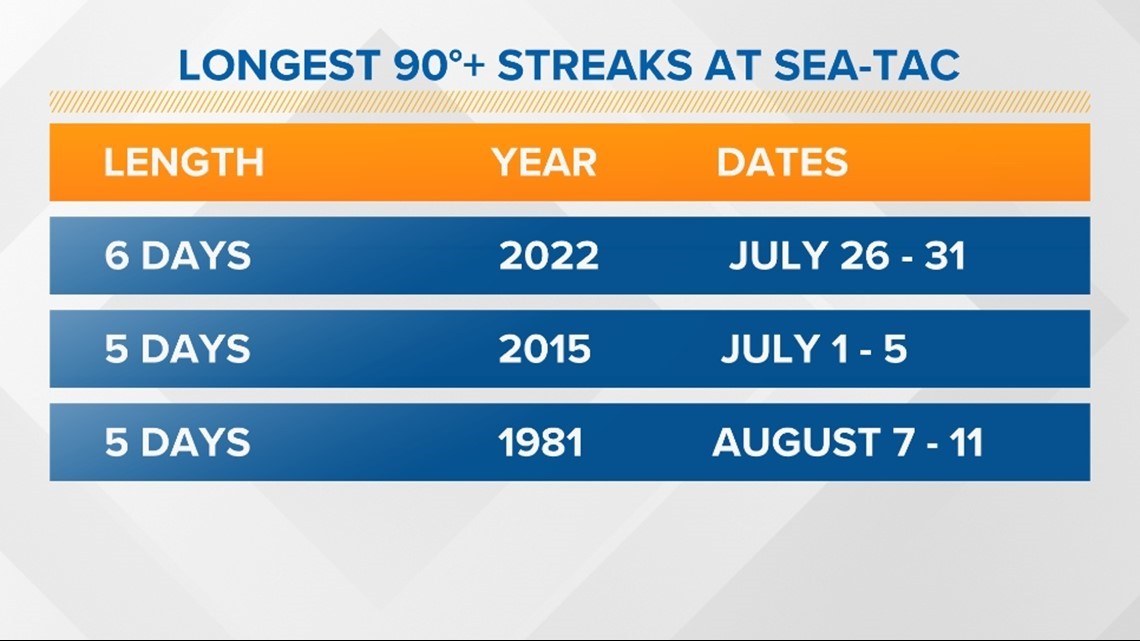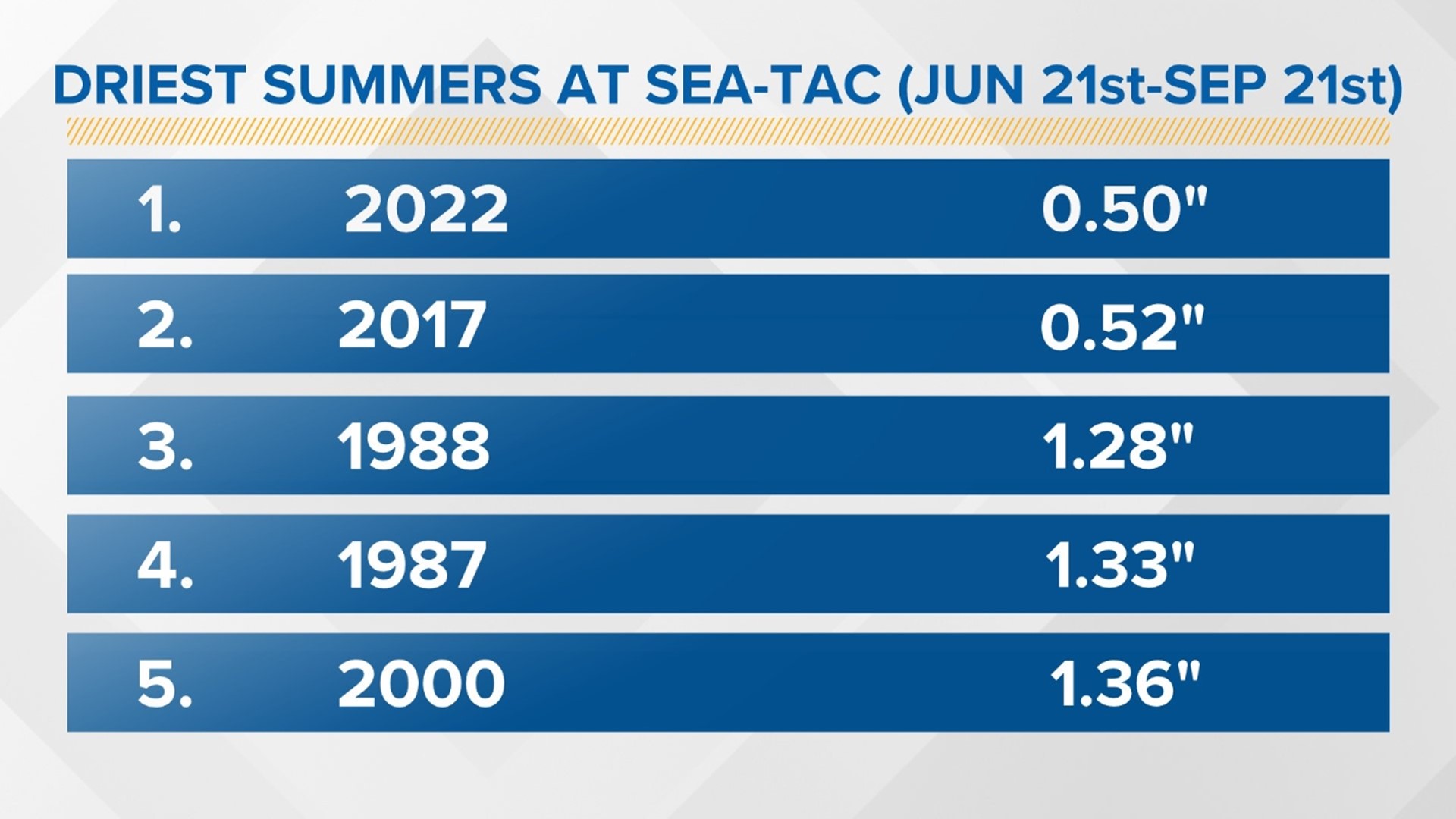SEATTLE — After a slow start to summer, the summer season kicked into full gear bringing dry conditions and prolonged high temperatures.
Now that summer's officially ending – the fall equinox was Thursday at 6:03 p.m. – let's take a look back at summer 2022, which is one that will go down in the record books in Seattle.
Summer 2022 is officially the driest summer on record in Seattle. During the summer, which is June 21 through Sept. 21, Seattle only saw 0.5 inches of rain. This is well below the seasonal average, beating out the previous driest summer, which was back in 2017. Summer 2017 saw 0.52 inches of rain.
Prior to the summer of 2017, the driest summers on record saw at least an inch of rain.
On average, Seattle sees 2.98 inches of rain between June 21 and Sept. 21.


Summer 2022 wasn't only dry but warm too coming off of a very chilly spring season. Temperatures this summer ran well above average.
Seattle saw the temperatures soar to 90 degrees or warmer a record 13 times. This is the most times in a calendar year that Seattle hit the 90-degree mark or warmer, beating out 2015, which saw 12 90-degree or warmer days.


This summer not only brought the most 90-degree or warmer days in a calendar year but it also brought the longest consecutive 90-degree or warmer stretch in recorded history.
Seattle hit 90 degrees or warmer six days in a row from July 26 through July 31, beating out 2015 and 1981, which both saw five consecutive days of 90 degrees or warmer.


While a brief fall-like cooldown is expected for the first couple of days of fall (See the latest forecast here), the national Climate Prediction Center forecast favors above-average temperatures over the next few weeks.
The extended outlook looks promising. We're entering our third consecutive La Niña winter. These ocean and atmospheric conditions typically favor a more active weather pattern for western Washington, which increases the likelihood of cooler temperatures and above-average rain and snow.

